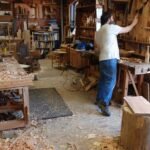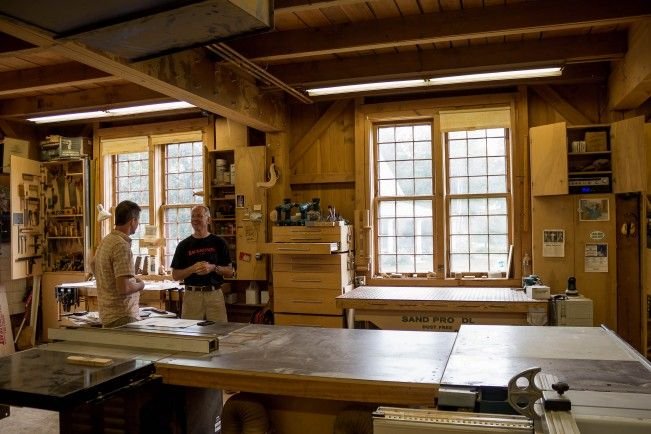The Great Woodwork Putty Fiasco
So, there I was, sipping a cup of black coffee—well, technically it was more like a cup of “work-behind-the-desk” brew, but I like to think of it as an artisanal blend when I’m in my workshop. You see, I had this idea that I’d take on a little project—nothing fancy, just fixing up an old oak desk that my grandfather built ages ago. Now, if you knew my granddad, you’d know he was a tinkerer of sorts, always crafting something out of whatever wood he could find. Poor soul didn’t have much of a plan half the time, but that’s what I loved about him. Anyway, back to the desk.
The Grand Entrance of Woodwork Putty
The first thing that hit me when I pulled the desk out of storage was that smell—oh man, that rich, earthy scent of aged wood. You know, the kind that makes you want to roll up your sleeves and get started? But then I saw it. Multiple little cracks and holes—like scars telling the wood’s story. Now, I’ve been working with wood for a good while now, so naturally, I thought, “How hard can it be to fix this?” Spoiler alert: I was about to find out.
I grabbed my time-worn tube of wood filler, a brand I picked up at the local hardware store. It was one of those “quick-drying” models, the kind that boasts about being easy to sand and paint over. Well, they don’t tell you that it’s also easy to screw up.
The First Scoop
As I squeezed that putty out, it reminded me of a kid playing with dough—smooth, creamy… and oh, that slightly chemical smell. Took me right back to high school chemistry class, which, frankly, was not my best subject. But I was determined. I pulled out my trusty putty knife—one I’d sharpened with my own hands, mind you—and went to work.
At first, it felt like a breeze. I was filling in those little cracks with ease, going back and forth, smoothing them out. I even caught myself humming a tune. You know you’re in the zone when you start feeling like a woodworking virtuoso. But then, chaos struck.
Oops, My Bad
I got a little too cocky, if I’m being honest. I thought I’d put a layer over a pretty substantial gouge without cleaning it out properly. You know, just slapped it on like frosting on a cake. Well, as it dried, I heard this horrible popping noise. I jumped back, heart racing, thinking something catastrophic had just happened. And what do you know? That putty pulled away from the edges, leaving a mess that looked more like a patch of dry mud than a smooth, finished surface.
I threw my hands up in the air and sighed. I almost gave up right then and there, thinking, “What’s the point?” I mean, it looked like a kid had done it blindfolded. But then I remembered my grandfather’s voice in my head, reminding me that every mistake was just a learning moment. So I grabbed a damp cloth to wipe it away, murmuring to myself that this would turn into some sort of come-to-Jesus moment in my crafting journey.
The Do-Over
Fast forward to the next round. After letting that first layer dry—yeah, I waited this time like a good little woodworker—I went in for a do-over, armed with some actual finesse. Gotta love a second chance, right? I cleaned out the groove properly this time, making sure to get all the old debris out first. Instead of just slapping the putty on, I started to treat it like working with clay. I worked it in gently, feeling the grooves and making sure every bit got filled.
I pulled out my sander—my baby, really. The sound it made was almost soothing, like a gentle hum that made me feel like everything would be alright. There’s something incredibly satisfying about sanding a project down, the little clouds of dust floating away like all my worries.
The Moment of Truth
Once I thought I had it just right, the smell of paint wafted over me as I opened the can of my favorite wood stain. It’s a warm walnut shade, nothing too flashy, just classic. I applied it carefully—brush strokes and all—and once that dried, the moment came: pulling off the masking tape to reveal my edges.
I laughed when it actually worked. There it was, my grandfather’s old desk looking as good as new (almost). Those scars that once looked like failures now stood for something. Every crack filled, and every mistake learned from.
Lessons Learned
So, what does all this rambling amount to, you ask? Well, if you’re thinking about trying your hand at woodwork and feel like you might just mess it up, just go for it. Honestly, I wish someone had told me earlier that it’s okay to fail a little, to learn along the way. It’s part of the charm, really. In the end, what matters is the memory tied to each grain, each flaw.
Next time you find yourself with a tub of woodwork putty, remember: it’s not just about fixing things; it’s about the stories you build along the way. And hey, if it doesn’t turn out perfect, at least you’ll have a tale to tell over that cup of coffee. Cheers to the unexpected journeys in woodwork!









